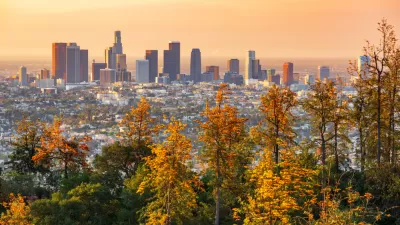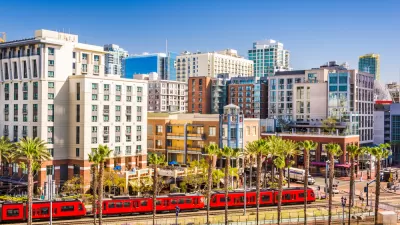Reducing greenhouse gas emissions is both a local challenge and a global imperative, says Rohit Aggarwala, the director of Long-Term Planning and Sustainability for New York City. Nate Berg caught up with Aggarwala to talk about his office's sustainability plans and the possible dangers posed by federal intervention.
New York City is America's most iconic metropolis. It's the biggest, the most famous and in many ways the most exciting. Beyond the glitz, New York is also exciting because it is instituting some very forward thinking programs and policies like the city's long-term sustainability plan, PlaNYC. New York's leadership on environmental sustainability has been a model for the nation.
Rohit Aggarwala is one of the reasons why. As director of Long-Term Planning and Sustainability for the office of New York Mayor Michael Bloomberg, he was recently invited to speak on a panel at Opportunity Green, a green business conference held at UCLA November 7-8. He offered an update on the two-year-old PlaNYC, a 127-initiative plan to green the city. Two-thirds of those initiatives are either on-time or ahead of schedule, and the city hopes to reduce its greenhouse gas emissions 30% by 2030.

New York City already has one of the lowest per capita rates of greenhouse gas emissions among major global cities, and as it continues to chip away at its levels, other cities are looking to replicate its success. But what works for New York may not be the best method for other cities, Aggarwala cautions.
"A city's greening strategy has to be based on that city," Aggarwala said, responding to a local questioner wondering how L.A. could emulate New York's successes.
After the panel discussion, Aggarwala delved deeper into the inherent problems with city comparisons. He says that even with fairly straightforward issues like emissions levels, comparing some indicators between cities can lead to misconceptions.
"The data to do apples-to-apples comparisons just aren't there yet," Aggarwala said.
In fact, the ability of cities to take the lead in reducing their emissions may be in jeopardy. The American Clean Energy and Security Act (ACES), a bill aimed at creating a carbon cap-and-trade system, could limit how well cities are able to enact the policies they need to reduce carbon emissions. The bill was passed by the House of Representatives earlier this year, and prompted a series of critiques from Aggarwala's office calling for changes to the bill's language.
In a memo to Mayor Bloomberg about the bill [PDF], Aggarwala argues that cities are already leading the reduction of carbon emissions because they control many of the policies and codes that can be locally updated to achieve those reductions. By shifting money away from cities and relying on state-wide guidance over these policies, the effectiveness of these techniques will be reduced, Aggarwala says.
Even with the city-oriented mindset that has developed within the Obama Administration, Aggarwala remains skeptical that federal policies will make much of a difference in the way cities function.
"Traditionally, the federal government has had very clearly defined roles for states, but not for cities," he said. "That's a problem."
In the meantime, New York City's sustainability plan is moving forward, despite the possible hindrance of the federal government, and without its guidance.
Nate Berg is assistant editor of Planetizen.

Alabama: Trump Terminates Settlements for Black Communities Harmed By Raw Sewage
Trump deemed the landmark civil rights agreement “illegal DEI and environmental justice policy.”

Study: Maui’s Plan to Convert Vacation Rentals to Long-Term Housing Could Cause Nearly $1 Billion Economic Loss
The plan would reduce visitor accommodation by 25% resulting in 1,900 jobs lost.

Why Should We Subsidize Public Transportation?
Many public transit agencies face financial stress due to rising costs, declining fare revenue, and declining subsidies. Transit advocates must provide a strong business case for increasing public transit funding.

Wind Energy on the Rise Despite Federal Policy Reversal
The Trump administration is revoking federal support for renewable energy, but demand for new projects continues unabated.

Passengers Flock to Caltrain After Electrification
The new electric trains are running faster and more reliably, leading to strong ridership growth on the Bay Area rail system.

Texas Churches Rally Behind ‘Yes in God’s Back Yard’ Legislation
Religious leaders want the state to reduce zoning regulations to streamline leasing church-owned land to housing developers.
Urban Design for Planners 1: Software Tools
This six-course series explores essential urban design concepts using open source software and equips planners with the tools they need to participate fully in the urban design process.
Planning for Universal Design
Learn the tools for implementing Universal Design in planning regulations.
Caltrans
Smith Gee Studio
Institute for Housing and Urban Development Studies (IHS)
City of Grandview
Harvard GSD Executive Education
Toledo-Lucas County Plan Commissions
Salt Lake City
NYU Wagner Graduate School of Public Service





























